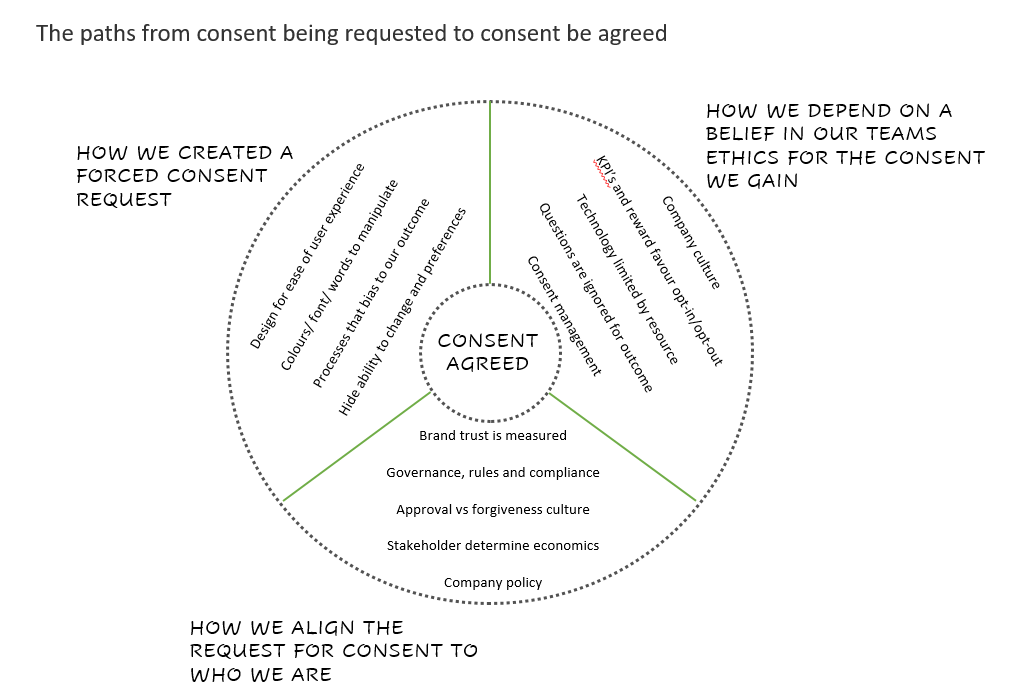Exploring the winding path from consent being requested to consent being given
The purpose of this post is to explore the topic of CONSENT, which I have been writing about for over 6 years. I have unpacked consent in many articles and have concluded that as we unpack each layer of consent, we find that it is not what you thought it was. CONSENT is a mix of technology, ethics, policy, law, requirements, economics, data, marketing and trust to name a few.
There are three paths leading from consent being requested to consent being agreed by the user.
Path 1 is that you use your design skills to manufacture the users consent, using colour, fonts, buttons, processes with the intent to gain consent without interfering with the real business purpose. Lowest possible barrier.
Path 2 is where we depend on each team (marketing, sales, operations and tech) doing their own thing and determine their own methods to gain and confirm consent to satisfy their requirements. Confusion often becomes evident
Path 3 is where the organisation designs consent to be aligned to its own values and recognises that policy, rules and compliance will need to be reviewed and maybe re-written.
Often the senior leadership/ board issue for consent is the unintended consequences of the journey they did not intend.

Once consent has been gained, what that consent is for still needs to be determined. Path 3 should be clear but other paths are far more difficult. To close the gap between what the user believes they have consented for and what they have actually given you consent for based on the terms can lead to a breakdown in trust.
However consent does not end there as we then need to understand and explain data mobility, data sharing & transfer, and data portability.
There are three paths leading from consent being requested to consent being agreed by the user.
Path 1 is that you use your design skills to manufacture the users consent, using colour, fonts, buttons, processes with the intent to gain consent without interfering with the real business purpose. Lowest possible barrier.
Path 2 is where we depend on each team (marketing, sales, operations and tech) doing their own thing and determine their own methods to gain and confirm consent to satisfy their requirements. Confusion often becomes evident
Path 3 is where the organisation designs consent to be aligned to its own values and recognises that policy, rules and compliance will need to be reviewed and maybe re-written.
Often the senior leadership/ board issue for consent is the unintended consequences of the journey they did not intend.
Once consent has been gained, what that consent is for still needs to be determined. Path 3 should be clear but other paths are far more difficult. To close the gap between what the user believes they have consented for and what they have actually given you consent for based on the terms can lead to a breakdown in trust.
However consent does not end there as we then need to understand and explain data mobility, data sharing & transfer, and data portability.